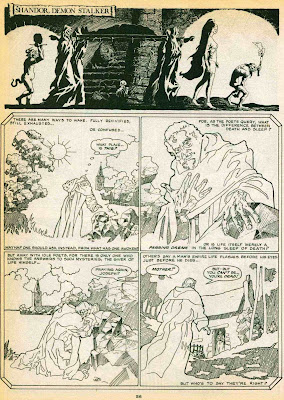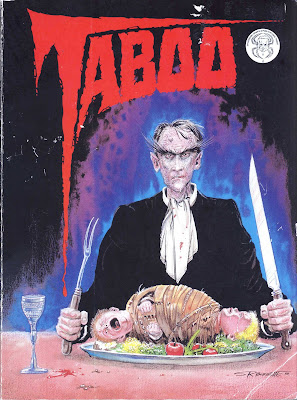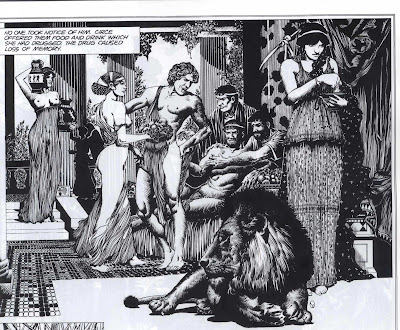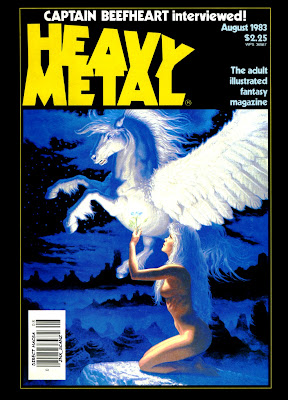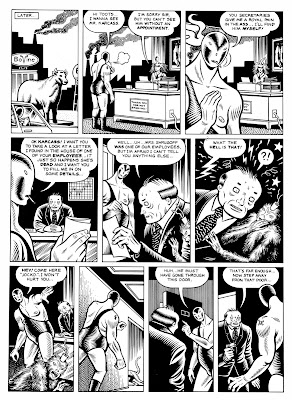Book Review: 'Jitterbug' by Mike McQuay
4 / 5 Stars
‘Jitterbug’ was published by Bantam Books in August, 1984; the cover artwork (which resembles something designed for a romance novel, rather than sf) is by Enric.
I remember picking this book up in 1984, and thinking it was a decent read at the time. Nearly thirty years later, it’s still entertaining, and, in the light of events post-9/11, its vision of an Arab-dominated future doesn’t seem so outlandish.
The book is set in the year 2155, and the Arabs – and the Saudis, in particular – rule the world.
Their ascent to power has been engineered by the profligate use of a biological weapon called the ‘Jitterbug virus’. A highly transmissible, lethal herpesvirus, Jitterbug is stored in enormous domes centered in all the world’s major cities, and at any time, Faisel Al Sa’ud, ruler of the world, can order its release.
Vast tracts of the Earth’s continents are thinly peopled by the infected, outcasts, and other malcontents, who refuse to seek refuge behind the massive walls of the remaining cities.
As the novel opens, a young scavenger named Olson, idling by an East Texas highway, witnesses an act of casual brutality committed by Junex Catanine, a member of the corporate elite who manage the affairs of the ‘Light of the World’ (LOW) corporation – the Arab-owned business conglomerate that dominates the world economy.
Through luck, and some degree of backwoods courage, Olson finds himself taking Catanine’s place in the hierarchy of the LOW offices in New Orleans. Overnight, Olson has gone from a penniless wanderer, to a contender for power. But his rise to the top won’t be easy….
…..Rennie Du’Camp, an ambitious manager with a strong streak of psychopathology to his personality, has no intention of letting Olson elbow him out of the struggle to wield ultimate power in the LOW offices.
……Milander, a Jitterbug sufferer with a warped, Messianic attitude towards the suffering multitudes of the Infected, is assembling a vast army for a march on New Orleans. For he believes that only through the extinction of mankind, can the world be Redeemed.
….Abdullah Al Sa’ud, Faisel’s brother, has been forcibly uprooted from his Bedouin tribe in Arabia and sent to New Orleans to discover why LOW office’s accounts have been losing enormous sums of money. If he can’t uncover who or what is behind the embezzlement, he has orders to release the Dome in the city, and condemn all its inhabitants to death.
…..And to top it all off, it won’t stop raining, and the prospect of a disastrous flood looms large for New Orleans….
At 422 pages, ‘Jitterbug’ is a lengthy novel, and could have benefited from being 50 pages shorter. That said, author McQuay does a good job of keeping his chapters brief, and the narratives associated with several sub-plots are in constant motion. There are a number of well-written action scenes that arrive at just the right moments to keep the novel’s momentum going.
Also noteworthy in ‘Jitterbug’ is the inclusion of lots of sarcastic humor, much of it derived from a keen awareness of the Arab / Muslim’s mindset and world view.
Back when this book was written in 1984, only a tiny number of Westerners, much less Americans, had any real idea of what the concepts of ‘Arab’ and ‘Muslim’ actually meant. Thus, ‘Jitterbug’ offered an imaginative take on what few (including myself) suspected would eventually be a massive change in the World Order.
Nowadays, with jihadis and Wahabbis rampant in the Muslim world, and the populations of Western Europe confronting the rise of Eurabia, ‘Jitterbug’ has a prescient quality that marks successful science fiction.
4 / 5 Stars
‘Jitterbug’ was published by Bantam Books in August, 1984; the cover artwork (which resembles something designed for a romance novel, rather than sf) is by Enric.
I remember picking this book up in 1984, and thinking it was a decent read at the time. Nearly thirty years later, it’s still entertaining, and, in the light of events post-9/11, its vision of an Arab-dominated future doesn’t seem so outlandish.
The book is set in the year 2155, and the Arabs – and the Saudis, in particular – rule the world.
Their ascent to power has been engineered by the profligate use of a biological weapon called the ‘Jitterbug virus’. A highly transmissible, lethal herpesvirus, Jitterbug is stored in enormous domes centered in all the world’s major cities, and at any time, Faisel Al Sa’ud, ruler of the world, can order its release.
Vast tracts of the Earth’s continents are thinly peopled by the infected, outcasts, and other malcontents, who refuse to seek refuge behind the massive walls of the remaining cities.
As the novel opens, a young scavenger named Olson, idling by an East Texas highway, witnesses an act of casual brutality committed by Junex Catanine, a member of the corporate elite who manage the affairs of the ‘Light of the World’ (LOW) corporation – the Arab-owned business conglomerate that dominates the world economy.
Through luck, and some degree of backwoods courage, Olson finds himself taking Catanine’s place in the hierarchy of the LOW offices in New Orleans. Overnight, Olson has gone from a penniless wanderer, to a contender for power. But his rise to the top won’t be easy….
…..Rennie Du’Camp, an ambitious manager with a strong streak of psychopathology to his personality, has no intention of letting Olson elbow him out of the struggle to wield ultimate power in the LOW offices.
……Milander, a Jitterbug sufferer with a warped, Messianic attitude towards the suffering multitudes of the Infected, is assembling a vast army for a march on New Orleans. For he believes that only through the extinction of mankind, can the world be Redeemed.
….Abdullah Al Sa’ud, Faisel’s brother, has been forcibly uprooted from his Bedouin tribe in Arabia and sent to New Orleans to discover why LOW office’s accounts have been losing enormous sums of money. If he can’t uncover who or what is behind the embezzlement, he has orders to release the Dome in the city, and condemn all its inhabitants to death.
…..And to top it all off, it won’t stop raining, and the prospect of a disastrous flood looms large for New Orleans….
At 422 pages, ‘Jitterbug’ is a lengthy novel, and could have benefited from being 50 pages shorter. That said, author McQuay does a good job of keeping his chapters brief, and the narratives associated with several sub-plots are in constant motion. There are a number of well-written action scenes that arrive at just the right moments to keep the novel’s momentum going.
Also noteworthy in ‘Jitterbug’ is the inclusion of lots of sarcastic humor, much of it derived from a keen awareness of the Arab / Muslim’s mindset and world view.
Back when this book was written in 1984, only a tiny number of Westerners, much less Americans, had any real idea of what the concepts of ‘Arab’ and ‘Muslim’ actually meant. Thus, ‘Jitterbug’ offered an imaginative take on what few (including myself) suspected would eventually be a massive change in the World Order.
Nowadays, with jihadis and Wahabbis rampant in the Muslim world, and the populations of Western Europe confronting the rise of Eurabia, ‘Jitterbug’ has a prescient quality that marks successful science fiction.






















